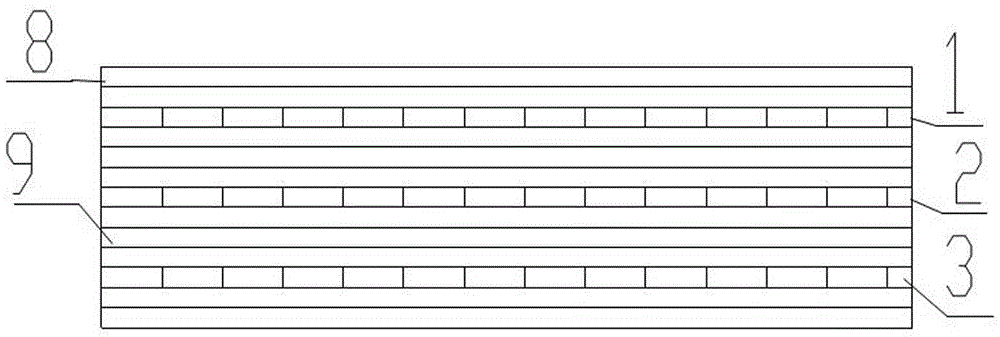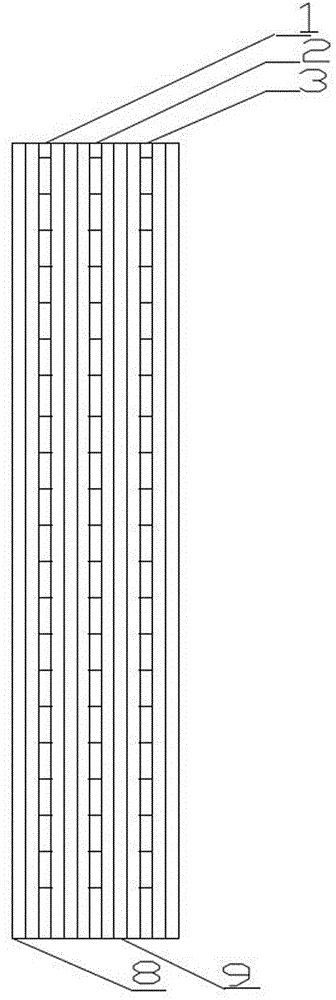Method for manufacturing environmental-protection anti-deformation board at low carbon
A technology of anti-deformation and plank, which is applied in the jointing of wooden veneers, manufacturing tools, wood processing appliances, etc., can solve the problems of non-environmental protection, easy foaming and deformation, waste of wood resources, etc., and achieve good market application prospects, Prevent expansion or contraction, facilitate the effect of popularization and application
- Summary
- Abstract
- Description
- Claims
- Application Information
AI Technical Summary
Problems solved by technology
Method used
Image
Examples
Embodiment 1
[0029] A low-carbon method for producing environmentally friendly and anti-deformation boards. The method includes the following steps: the first step is to use a rotary cutter to cut the logs into veneers, and divide the veneers into grades. The veneer is used as the middle layer, and then the veneer is dried to a moisture content below 12%; the surface layer and the middle layer that need to be bonded are coated with an environmentally friendly E0 glue with a concentration of 70%, and pressed to form a composite board. Cut into slats of the same specification, and the surface of the slats to be bonded is coated with an environmentally friendly E0-grade glue with a concentration of 70%;
[0030] The second step is to choose three layers of horizontally textured slats, place a layer of horizontally textured slats in the middle, and place the remaining two layers of horizontally textured slats on the surface layer or the inner layer of the surface layer. Put the slats in th...
Embodiment 2
[0033] The low-carbon method for making environmentally friendly and anti-deformation boards described in this embodiment, the first step is to cut the logs into veneers with a rotary cutter, and select the first-grade veneers, second-grade veneers, and third-grade veneers for classification and storage. The veneer is used on the surface, and other grades of veneer are used as the middle layer, and then the veneer is dried with a drum or a vacuum dryer to a moisture content of 6-12%; the surface layer and the middle layer that need to be bonded are coated with environmental protection E0 grade , Glue with a concentration of 70%, the glue is vegetable glue with zero formaldehyde emission or E0 grade melamine glue or phenolic glue; it is pressed to make a composite board, and the pressed composite board is sawn into the same specification after fine cutting 100% EO-grade environmental protection glue is applied to the cross-section of the sawed slats; the surface layer slats ar...
PUM
 Login to View More
Login to View More Abstract
Description
Claims
Application Information
 Login to View More
Login to View More - R&D
- Intellectual Property
- Life Sciences
- Materials
- Tech Scout
- Unparalleled Data Quality
- Higher Quality Content
- 60% Fewer Hallucinations
Browse by: Latest US Patents, China's latest patents, Technical Efficacy Thesaurus, Application Domain, Technology Topic, Popular Technical Reports.
© 2025 PatSnap. All rights reserved.Legal|Privacy policy|Modern Slavery Act Transparency Statement|Sitemap|About US| Contact US: help@patsnap.com



